Home to ancient cultures long before the Spanish reached its shores, Lima blends the past with the present, making it an inviting city to visit. Peru’s capital and largest city is the place to learn more about pre-Columbian life at a time when humans were sacrificed to appease the gods. The city is filled with museums, some on colonial buildings, others in modern buildings.
Founded in 1535 by the famous Spanish conquistador Francisco Pizarro, Lima is noted for its well-preserved colonial center. Here you’ll find some of the most well-known tourist attractions in Lima with amazing old churches, palaces and casonas dotted about.
See also: Where to Stay in Lima
Visitors who desire a break from these things to do in Lima can enjoy a stroll along the beach or chow down on typical Peruvian food at a neighborhood case. And when night falls, visitors can partake of the disco scene or enjoy a magic show featuring dancing water fountains.
19. San Pedro Church
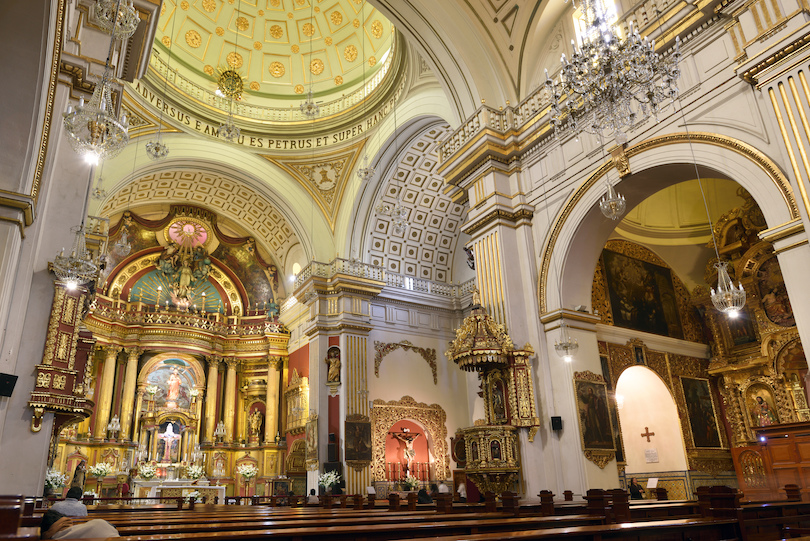
Just a short walk southeast of both the Plaza de Armas and cathedral is the beautiful Baroque-style San Pedro Church. Full of glittering gold treasures and centuries-old artworks, it is a very picturesque spot to stop by when exploring downtown.
Completed back in 1638 by the Jesuits, the colonial church is painted a pretty pale yellow and white with two tall bell towers flanking its facade. Inside truly is a feast for the eyes as impressive paintings and gold-leaf altars decorate almost every conceivable surface.
Aside from ogling at all the incredibly ornate artworks on show, you can also see the ancient relics of numerous saints. One of the loveliest churches in Lima, and Peru too, its elegant ceilings and sculptures, carvings and cloisters all make the basilica well worth visiting.
18. Museo Oro del Peru
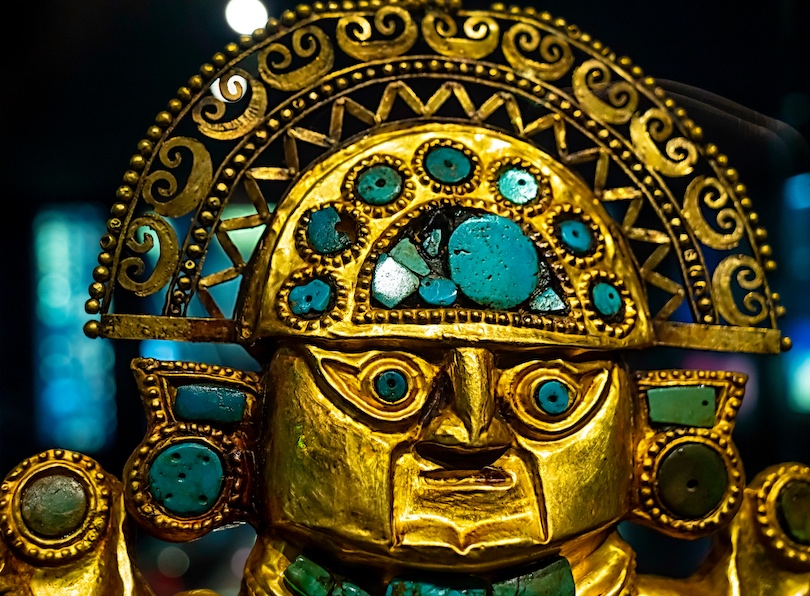
If you want to see more amazing artworks, but from pre-Hispanic times, then the Museo Oro del Peru is a great place to go. Set on the southeastern outskirts of the capital, it contains a superb collection of gold artifacts, armor and ceremonial objects.
Now joined with the Weapons of the World Museum, its fascinating galleries were first unveiled to the public in 1968. On display are over 8,000 glimmering gold, silver and copper artworks and objects made by the Incas and other even earlier civilizations. All these highlight their mastery of metallurgy techniques and explain more about both their world view and religious beliefs.
Very intricately crafted, its spacious galleries exhibit everything from ancient ceramics and textiles to elaborate statues, masks and jewellery pieces. Thousands of swords, firearms and suits of armour from around the world are also on show here.
17. Parque Kennedy
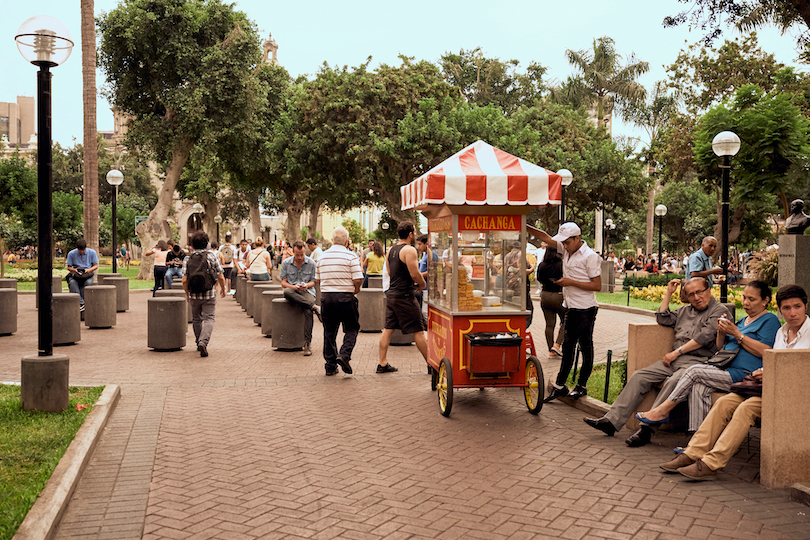
Rightfully renowned for its countless cute cat residents, the peaceful Parque Kennedy lies right in the heart of the upscale Miraflores barrio. Named in honour of the former president, its gorgeous green spaces are also dotted with fountains, flowerbeds and food sellers.
Also known as Miraflores Central Park, its immaculately manicured grounds and lush gardens were created in the 1920s. Although now hard to imagine, its central site actually saw some action during the fiercely contested War of the Pacific.
Besides being bordered by the historic Virgen Milagrosa Church, it has a bust of JFK to examine and tall, swaying palms to stroll beneath. Book fairs and flea markets also regularly take place here while friendly vendors sell tasty snacks throughout the week.
Most people, however, mainly visit for all the adorable cats that inhabit the park. Very sweet, they can be spotted sleeping almost everywhere and are usually only too happy to be stroked or fed.
16. National Museum of Archaeology, Anthropology and History
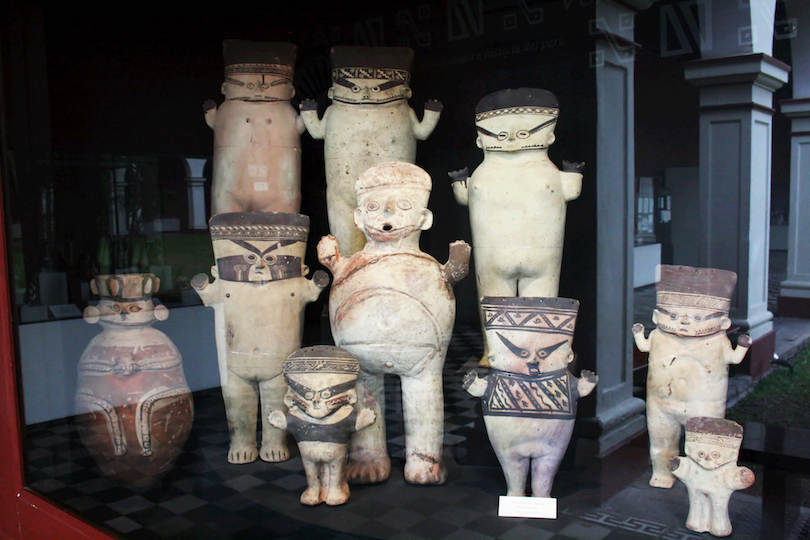
Offering an invaluable look into the country’s past is the excellent National Museum of Archaeology, Anthropology and History. Packed with all kinds of enthralling artifacts, it lines one side of the Plaza Bolivar in the Pueblo Libre district.
The oldest and largest museum in all of Peru, the hugely important cultural institute was established back in 1822. Absolutely enormous, its endless galleries display over 100,000 objects and artworks, spanning the entire human history of the Andean nation. While some sections look at the Incas and their impressive achievements, others focus instead on the arrival of the Spanish or independence.
Highlights of its extensive collection include the remarkable Raimondi Stele sacred carving and Tello Obelisk from the Chavin de Huantar archaeological site. As it is currently undergoing renovations, be aware that only some rooms will be open when you visit the museum.
15. Museo Pedro de Osma
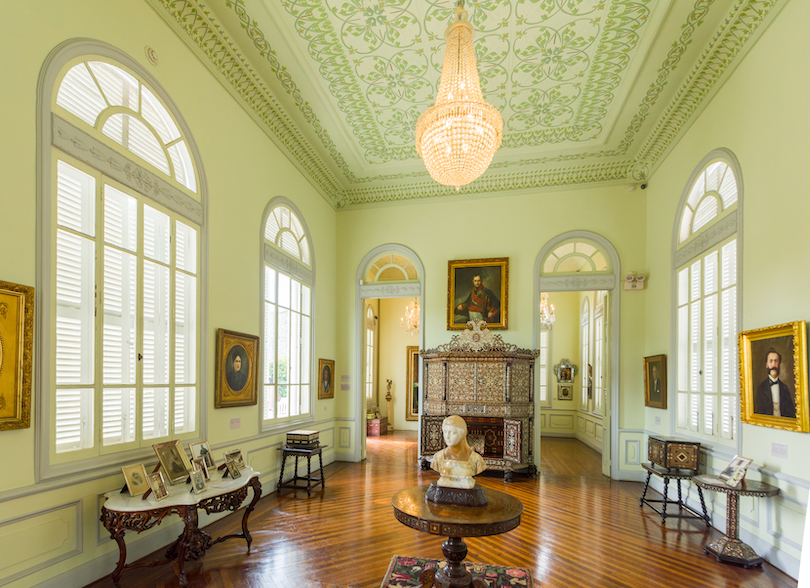
Another top-class museum to check out is the Museo Pedro de Osma in the bohemian Barranco part of town. Housed in its exquisite Beaux-Arts mansion are hundreds of colonial paintings, sculptures, silverwork pieces and furniture to inspect.
Once the private estate and summer residence of the eminent lawyer and politician Pedro de Osma, it was finally turned into a museum in 1988. Very well-preserved, the century-old building, its shining chandeliers and stained-glass windows already look phenomenal, what with all the pristine gardens surrounding them.
Inside, you can admire all its paintings, portraits and wooden sculptures, most of which are religious. Some of these date back to the 1500s with the museum’s app providing more information on all the unique artworks you come across.
14. Visit Pachacamac
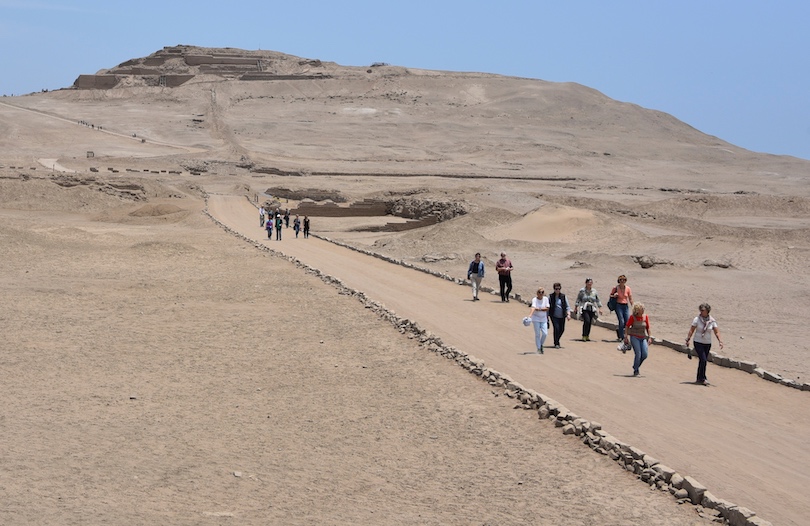
Once a very important religious site, Pachacamac thrived for around 1,300 years until the arrival of the Spanish. At its sprawling archaeological site just south of the capital, you can wander around all the crumbling ruins and learn more about their history at its visitor center.
Dedicated to Pacha Kamaq – the ‘Earth Maker’ god who created the world – the pre-Columbian citadel was initially settled around the year 200. The Incas later added their own structures and burial sites. Nowadays, only the remains of adobe and stone palaces and temple pyramids are strewn across all its sun-scorched desert landscapes.
As most are in rather poor condition, most visitors head straight to the Temple of the Sun and House of the Chosen Women palace. These give you a bit of a better idea about what it would have looked like back in its heyday. To really understand what you’re seeing though, it’s best to take a local guide. In any case, the views here over the desert, ocean and ancient edifices really are awe-inspiring.
13. Parque El Olivar
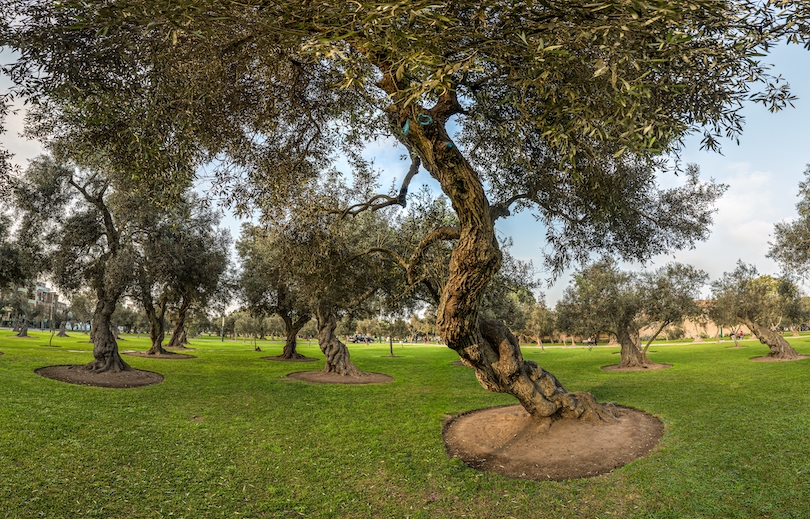
In the affluent San Isidro district is another calm, quiet green space where you can take a break from sightseeing. Known and named for its centuries-old olive trees that were actually brought over from Spain, Parque El Olivar has pretty fish-filled ponds and flowerbeds to amble around.
Very well maintained, its lawns are lined by rows of gnarled old olive trees, some of which date to the seventeenth century. All together, their twisted limbs and outlines create quite a striking sight with brightly-colored flowerbeds also lying alongside its lagoons. Here you can spy both koi swimming about and turtles sunning themselves on rocks.
A world away from the hustle and bustle, the lush, leafy park is the perfect place to relax and unwind. Other than sitting quietly on a bench and taking in the scenery, you can enjoy a picnic on the grass or saunter along its snaking paths.
12. Santo Domingo Monastery
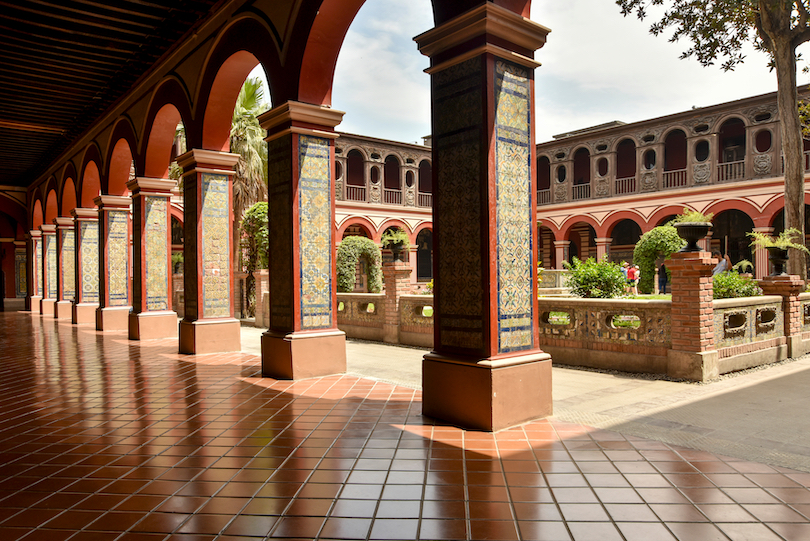
Just a stone’s throw from both the main square and cathedral is the equally stunning Santo Domingo Monastery. Home to a charming convent and colorfully painted cloisters, it also contains the relics of several important saints.
One of the oldest and most historic monasteries in Lima, it was created in the 1530s on land granted by Francisco Pizarro – the famous Spanish conquistador. Now instantly recognized by its lovely pink belltower, its old church houses the remains of San Juan, Santa Rosa and San Martin; three of Peru’s most-revered religious figures.
After marveling at its immense altarpiece, continue on to see the astounding Sevillian azulejos that adorn its courtyards. Throughout the complex, you’ll come across interesting paintings and artworks with the monastery’s atmospheric-old library also being a must-see.
11. Museo de Arte de Lima
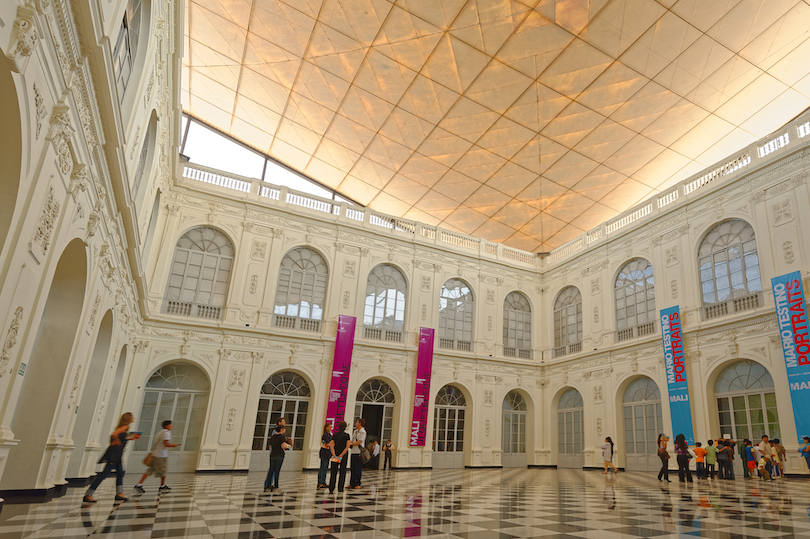
Boasting everything from pre-Columbian textiles and ceramics to mid-twentieth century paintings is the magnificent Museo de Arte de Lima (MALI). Located in the expansive Exposition Park, its fine collection occupies an arresting Beaux-Arts palace.
First opened to the public in 1961, its grand galleries cover more than 3,000 years of art history in the region. In chronological order, its exhibits explore first the pre-Columbian and colonial periods before moving on to the Republican-era and present day. Amongst all its 18,000 artworks are paintings and photos, drawings, metalwork and more.
Highlights include its expertly woven textiles, brilliant portraits of famous Peruvians and the elegant architecture of the palace itself. Known locally as MALI, the museum also regularly hosts temporary exhibits by both local and international artists.
10. Torre Tagle Palace
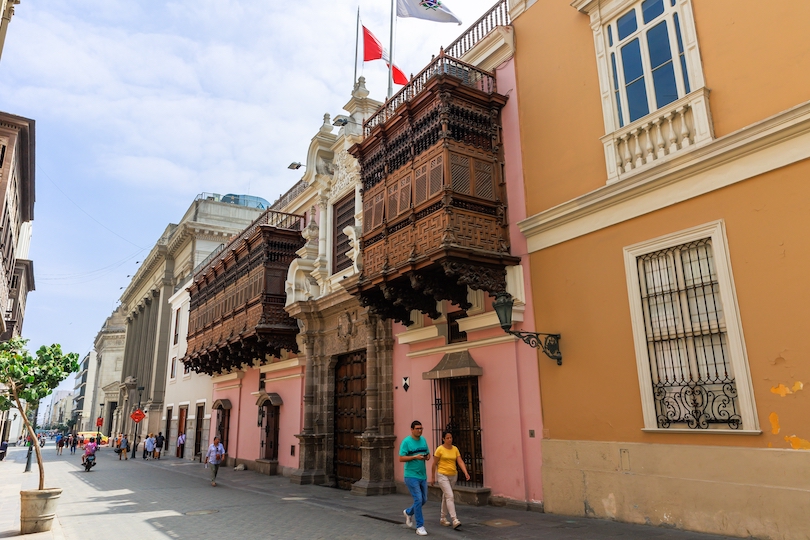
Yet another stately-looking building to stop by is the terrific Torre Tagle Palace right in the city center. Exhibiting an eye-catching mix of Moorish, Criollo and even Asian architectural features, its fetching facade and balconies make for some fantastic photos.
Now the main headquarters of the Ministry of Foreign Affairs of Peru, the attractive historic mansion was completed in 1535. Mostly Andalusian Baroque in style, its two intricately carved dark cedar and mahogany wood balconies lie on either side of the palace’s ornate stone portico.
Inside, yet more Mudejar-style balconies look down upon its airy courtyards with decorative Sevillian azulejos again coating some walls. Although it is not generally open for visits, the palace’s incredible exterior already makes it well worth visiting. One of the best-preserved colonial buildings in Lima, it lies right next to countless other important old churches, museums and government ministries.
9. Lima Cathedral
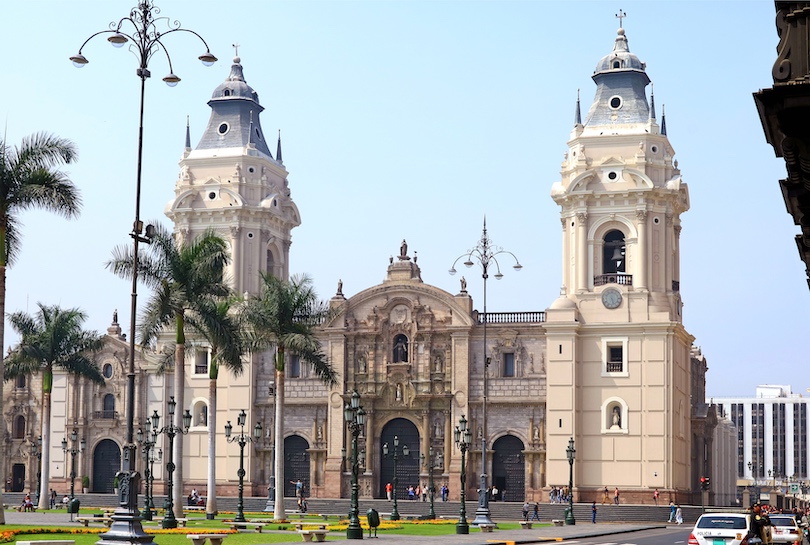
Dominating the east side of the lively Plaza de Armas is the absolutely enormous Lima Cathedral. An artistic and architectural gem, its dozen or so gold-decked chapels each seem to outdo each other in their ostentatiousness.
While construction began on the cathedral in 1535, the basilica’s current Baroque style dates to 1746 as earthquakes damaged and destroyed numerous other earlier editions. Flanking its vast facade are two large bell towers with striking statues of the apostles looking out from above its portals.
Aside from gazing in awe at its giant gold-plated altar and appreciating all the impressive artworks decorating its chapels, you can also see the final resting place of Francisco Pizarro. Its museum also displays yet more religious artifacts and artworks while a couple of crypts lie beneath its floors. At night, the cathedral and Archbishop’s Palace alongside it are magically illuminated.
8. Huaca Pucllana
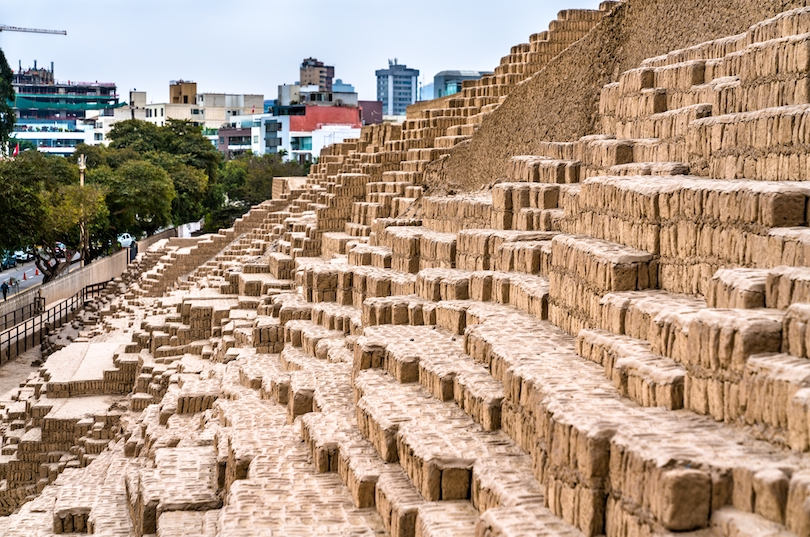
Now almost surrounded by glinting high-rises, the ancient ruins of Huaca Pucllana count among the capital’s most interesting attractions. Set right in the heart of Miraflores, the hulking great adobe-and-clay pyramid has guided tours and a small museum to teach you more about the site.
Made up of seven staggered platforms, the important administrative and ceremonial center was built by the Lima Culture around the year 200 AD. Dedicated again to Pacha Kamaq, the sacred temple highlighted the elite clergymen’s power over this part of the Peruvian coast.
Over the years, excavations have unveiled all kinds of ancient artifacts and even some mummies at the archaeological site. On tours, you’ll hear all about the pyramid’s history and the rituals performed here while exploring its dusty brick pathways.
7. Casa de Aliaga
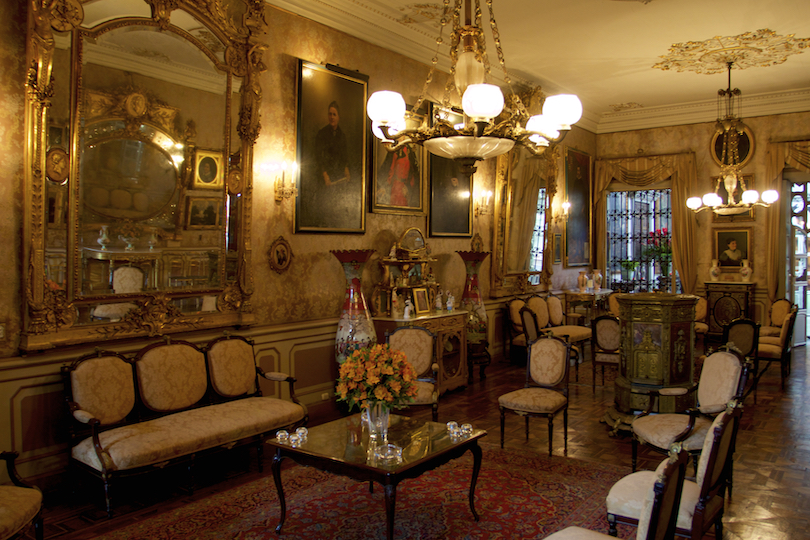
Although oft-overlooked, the charming Casa de Aliaga is another of Lima’s oldest and best-preserved colonial mansions. Hidden away down a side street just behind the main square and cathedral, it has now impressively been occupied by members of the same family for eighteen generations.
As old as the city itself, the house was erected in 1535 upon land again granted by Francisco Pizarro. While it may not look all that special from the outside, its colonial-style interior is lavishly decorated with vintage furnishings and period pieces.
On guided tours, you’ll see plenty of phenomenal paintings and statues and learn about the history of the Aliaga family. The sword of their conquistador ancestor Jeronimo who fought alongside Pizarro is also displayed. Very prettily put together, its marvelous marble staircase, rooms and hallways are a treat to wander around.
6. Monastery of San Francisco
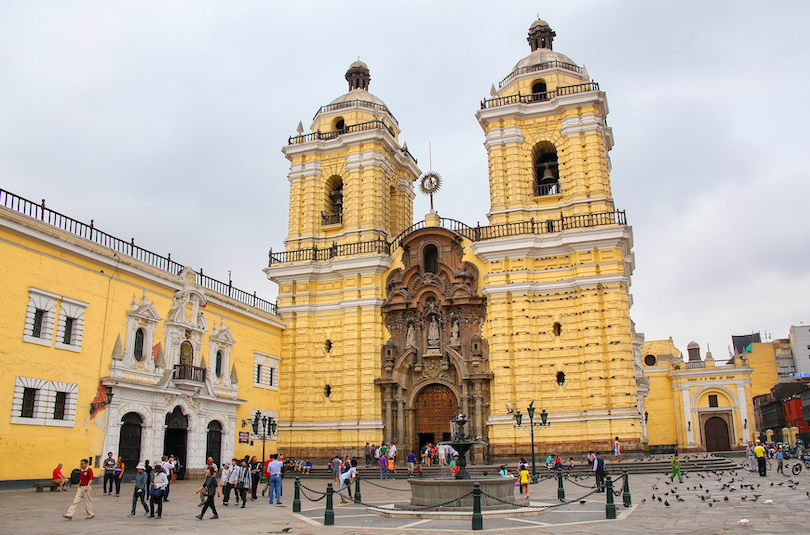
Only a short walk from the centuries-old casa is the Monastery of San Francisco. While it showcases some extraordinary architecture and artworks, it is mostly known for the claustrophobic catacombs that weave their way beneath the convent.
One of the finest buildings remaining from the viceroyalty era, the colossal Baroque-style church dates to 1673. Dedicated to Jude the Apostle, its imposing pale yellow facade and pretty front portal give way to an exquisite sacristy and colourful, airy cloisters. In addition, its massive library contains many ancient tomes while large religious paintings are found in its museum.
Of most interest to visitors, however, are its creepy catacombs which may at one point have housed the remains of up to 70,000 people. Venturing down into them is an eerie and unforgettable experience with many of the bones and skulls now arranged in artistic designs.
5. Museo Larco
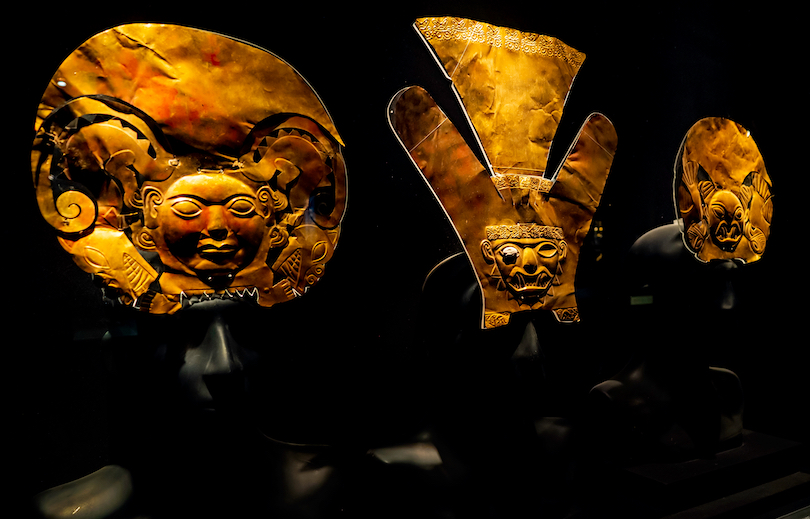
One of the biggest and best museums in Lima and all of Peru, Museo Larco’s endless artifacts and exhibits cover over 5,000 years of the country’s history. Located in the fabulous mansion of the former viceroy, it really is a must for art and history lovers.
Part of the Pueblo Libre district, the privately-owned museum and its eighteenth-century building first opened their doors in 1926. Since then, both locals and tourists alike have headed here to see all its unique and unusual pre-Columbian artifacts. In chronological order, you can see funerary masks and jewellery worn by the powerful priests and rulers of Peru.
Thousands of vases, stone carvings and metalwork pieces are also on show, produced by the Chimu, Nazca and Inca cultures among others. The museum is also known for its collection of erotic pottery that is often quite explicit!
4. Circuito Magico Del Agua
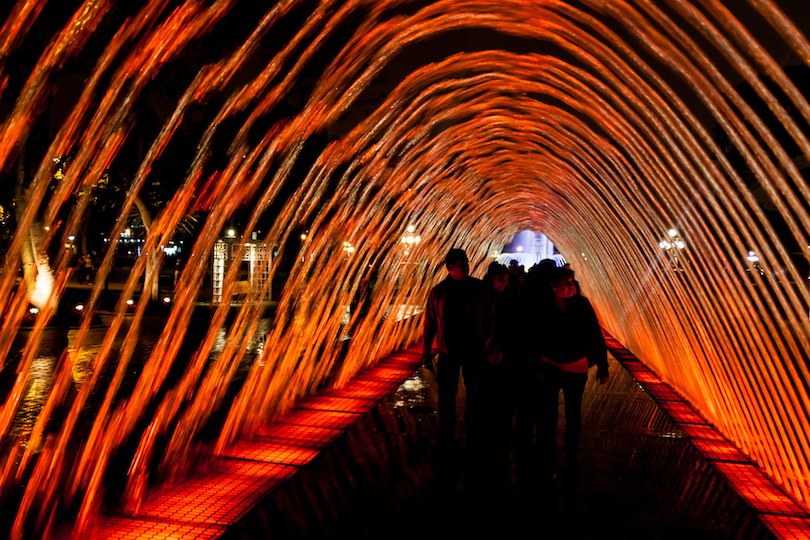
Another of the city’s major tourist attractions is the captivating Circuito Magico Del Agua; the world’s largest fountain complex. Quite lowkey during the day, the relaxed Park of the Reserve is completely transformed at night when a spectacular water, sound and light show brightens up its dark skies.
Just a fifteen-minute walk south of MALI and Exposition Park, the almost over-the-top water features were unveiled in 2007. Initially criticized due to their high cost and design, the thirteen interactive and illuminated fountains are now a firm favorite with visitors to the capital.
As well as constantly changing colour schemes, the fountains play a strange medley of Peruvian hits and ABBA classics. At the end, lasers light up the fittingly-named Fantasy Fountain which stretches a staggering 120 metres in length. One part of the ‘Magic Water Circuit’ even shoots a jet of water up to eighty metres into the air!
3. Plaza del Armas
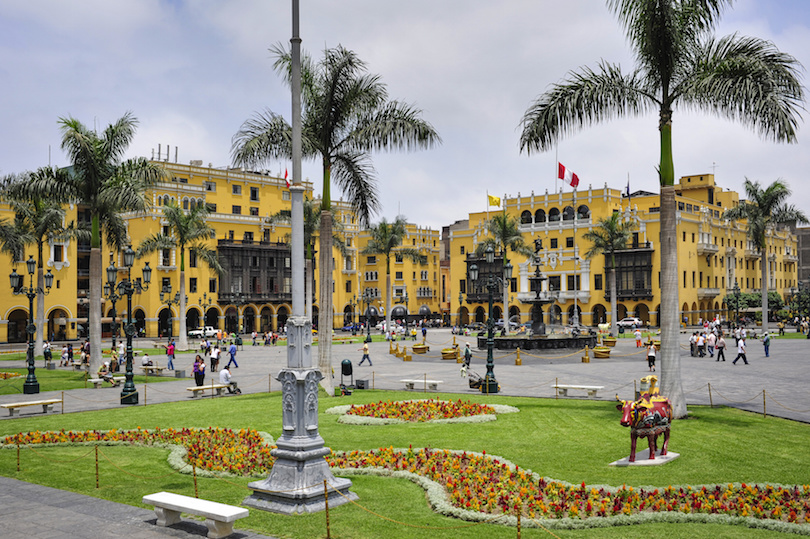
Lined by countless grand palaces and its gorgeous cathedral, the Plaza del Armas is where Lima first started life in the sixteenth century. Aside from taking in all its astounding architecture, you can stroll beneath its swaying palms or just simply sit and people-watch.
Covering a huge area, the site of the attractive plaza was chosen to be the heart of the settlement by the Spanish conquistador Francisco Pizarro back in 1535. Due to the destructive earthquake of 1746, however, not a single one of its original buildings now remains. Its oldest monument is instead the majestic bronze fountain from 1650 that lies right at its centre.
Also known as Plaza Mayor, its most impressive buildings include both the resplendent Archbishop’s Palace and the Neo-Baroque Government Palace – the official residence of Peru’s president. It is well worth returning later in the evening to see all the scenic square’s facades fantastically lit up.
2. Barranco
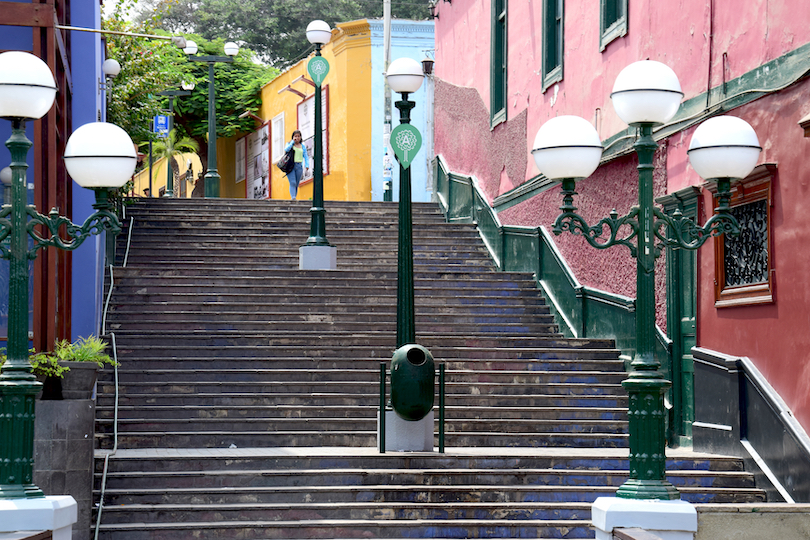
Invariably described as bohemian, the hip, happening barrio of Barranco is one of the most popular parts of the city to hang out in. Set alongside the Pacific Ocean, it has tons of trendy shops, bars and art galleries to check out. Many beautiful murals and cool, cute restaurants can also be found dotted about its seaside cliffs and flower-filled streets.
As it was originally a fashionable beach resort for affluent and aristocratic Limenos, lots of amazing old mansions line the leafy neighborhood. The colourful facades of all its ‘casonas’ and the relaxed feel about the area has led to many of Peru’s leading artists, musicians and designers living here.
While ambling around enjoying its ambience and architecture, you can snap some great photos of its public artworks and gaze out over the glittering Pacific. You also just have to try some tasty Peruvian dishes here or hit up its lively clubs and cafes.
1. Malecon de Miraflores & Parque del Amor
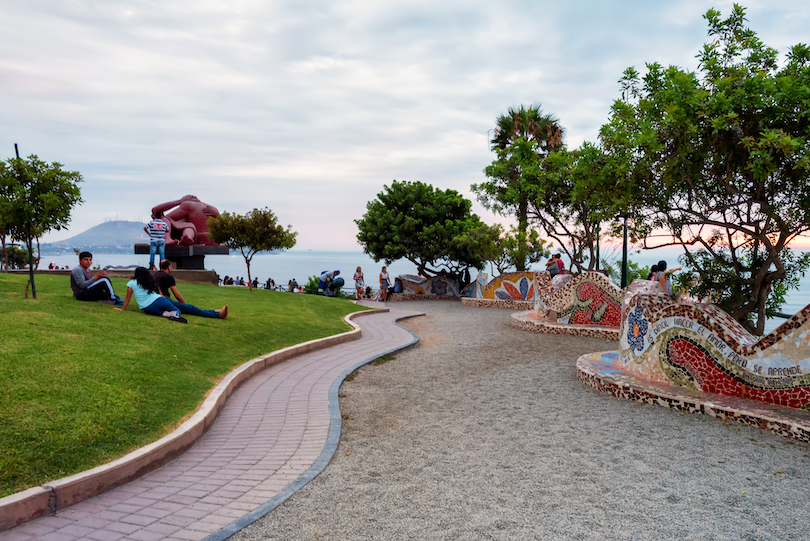
Directly north of Barranco is the upscale neighborhood of Miraflores which is also set atop of steep bluffs overlooking the Pacific Ocean. Thanks to its lovely lush, green Malecon, many people walk, run or cycle along the coast here while taking in its remarkable views and revitalizing sea breeze.
Actually encompassing several picturesque parks and gardens, the broad, clifftop boardwalk extends almost ten kilometers in total. Scattered about their trim lawns and flowerbeds are lots of interesting sculptures and public artworks. Some fabulous viewpoints also look out over the Costa Verde and all the bright white high-rises lining its bluffs.
The most-visited part of the Malecon though has to be the romantic Parque del Amor. Here you can take some memorable pictures of its wavy, mosaic walls and large statue of two lovers passionately embracing. An absolute must-visit, Miraflores, the Malecon and Love Park are the highlights of almost all travelers who spend time in Lima.
Best Time to Visit Lima
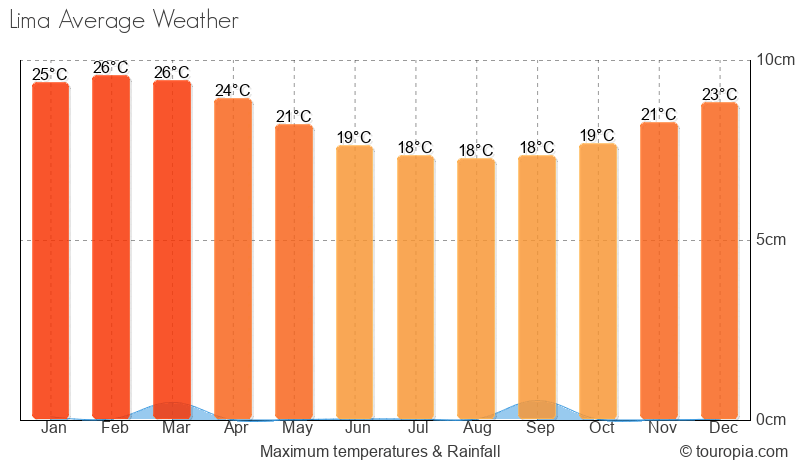
Despite being surrounded by a desert, Lima’s climate is actually quite mild due to the Pacific Ocean alongside it. The best time to visit is in summer when the warm, sunny days are great for ambling about its colonial center and coastline or sunbathing on its beaches.
During this period of December to April, temperatures average 24 to 27°C (75 to 80°F) with all kinds of fun events taking place. Aside from Christmas and New Year’s, parades, live music and firework displays are held for the city’s founding in January and carnival in February. As the skies are clear, many also kayak and surf with the days often being a bit muggy.
May to November is much cooler with averages of between 18 and 22°C (64 to 71°F). As its skies are overcast and a misty fog often hangs over the capital, this period isn’t as good for wandering about and enjoying outdoor activities.
Despite this, July and August are its peak season as many people have holidays. Prices rise with its hotels, restaurants and museums at their busiest. Massive events such as Peruvian Independence Day help create a lively atmosphere in town.
September and October are equally popular months to visit with Mistura – South America’s largest gastronomic festival – drawing huge crowds.

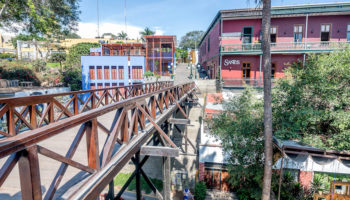
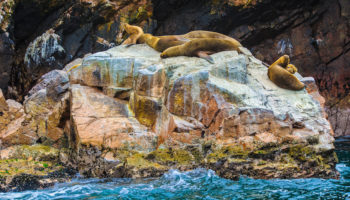
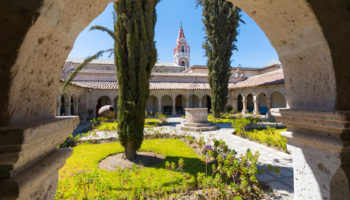
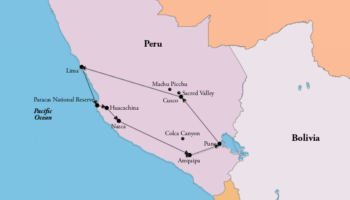
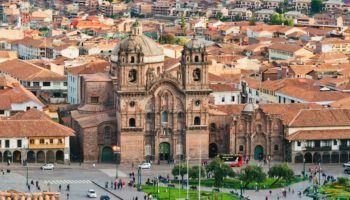
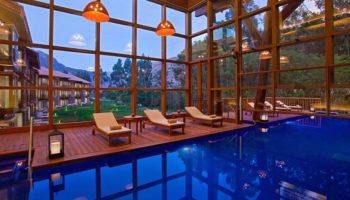
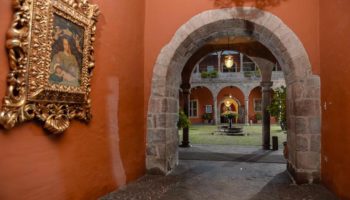
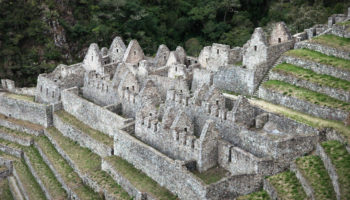
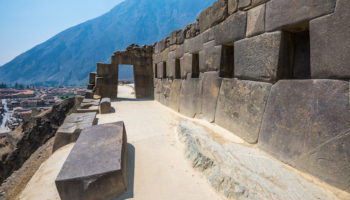
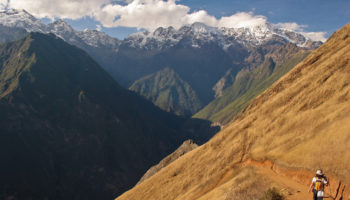
Leave a Reply